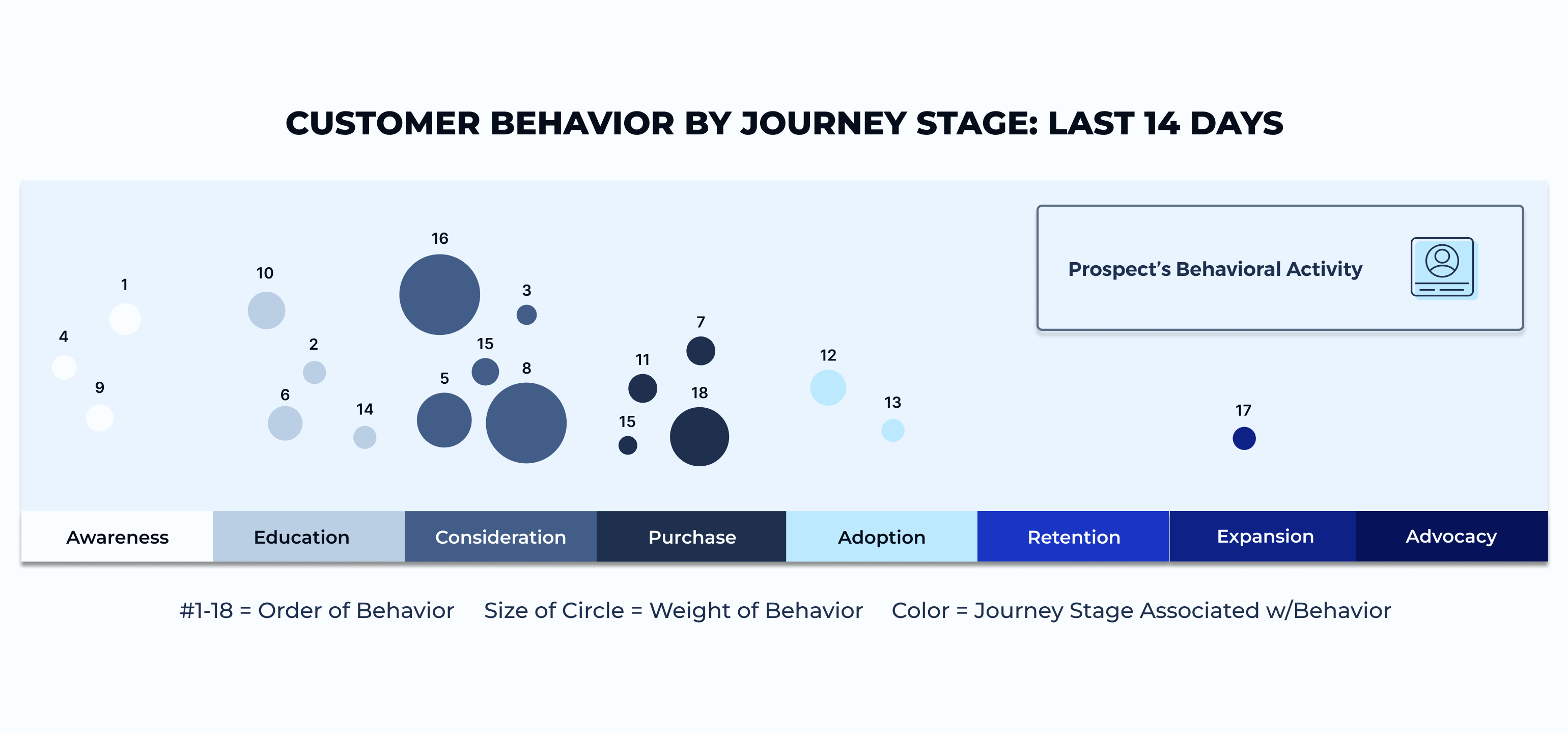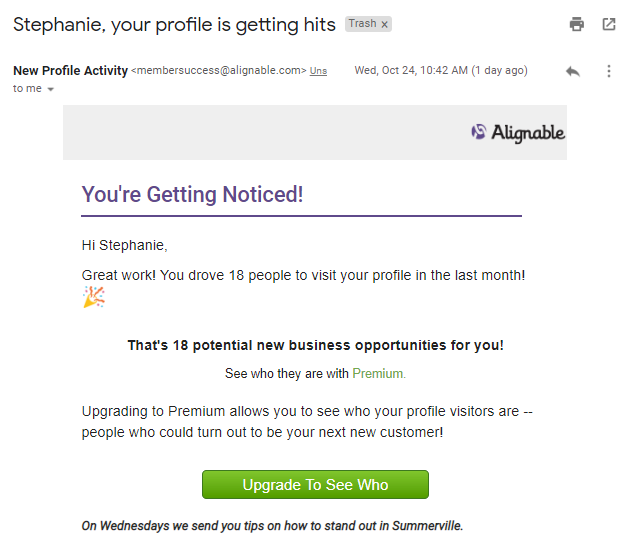Marketing segmentation for most brands relies solely on traditional approaches, such as geographical and demographic segmentation.
There’s no denying that knowing your average customer’s location, age, gender, etc., is essential to addressing their needs. However, just understanding who they are isn’t enough. You must also know what they do—so leveraging other customer data, like behavioral data, is equally important. Without this, other segmentation data you’ve collected may be rendered moot.
That’s why demographic segmentation is a marketing strategy your team needs in its arsenal.
What is behavioral segmentation?
Behavioral segmentation divides consumers according to behavior patterns as they interact with a company. As the name suggests, this category of segmentation studies the behavioral traits of consumers—their knowledge of, attitude towards, use of, likes/dislikes of, or response to a product, service, promotion, or brand.
The objective of behavioral segmentation is to:
- Understand how to address the particular needs and desires of customer groups
- Tailor your product or service to meet those needs and desires
- Discover opportunities to optimize the buyer’s journey
- Quantify their potential value to your business
- Develop a smart marketing strategy to improve and expand your customer base
It’s important to note that it doesn’t exist independently from other types of segmentation. Characteristics such as a customer’s age, gender, location, income, and occupation frequently correlate with behavioral data. This means that behavioral data can often be used to confirm certain conclusions about other segmentation data.
Why is behavioral segmentation so important?
Dividing the market into smaller segments, each with a common variable, allows brands to use valuable time and resources more efficiently. If all consumers experienced the same marketing technique, it would only prove effective for some of them. By understanding your prospective market better and dividing them accordingly, you can employ advertising personalization to ensure their needs are met:

Behavioral targeting has four main advantages:
- Personalization: Understanding how to target different groups of customers with unique offers—at the most appropriate times, through their preferred channels—increases personalization, allowing you to nurture them further along their buying journey.
- Predictive Insights: Historical behavioral patterns help predict and influence future customer behaviors and outcomes.
- Prioritization: Identifying high-value prospects with the greatest potential business impact enables you to make smarter decisions on how to best allocate time, budget, and resources.
- Performance: Monitoring growth patterns and change in segments over time helps gauge business health, and track performance against goals.
Use Instapage to target your behavioral segments ➔
Types of behavioral segmentation
1. Purchasing behavior
Purchase behavior-based segmentation looks at how customers act differently throughout the buying decision-making process. It helps businesses understand:
- How customers approach the purchase decision
- The complexity of the purchasing process
- The customer’s role in the purchasing process
- Barriers along the path to purchase
- Which behaviors are most and least predictive of purchase-making
Purchasing behavior can be broken down into four main categories:
- Complex: A customer is highly involved in the purchasing and decision-making process, and there is a significant difference between the brands being considered. For example, if someone is deciding between buying a Mercedes and a BMW, there’s likely a lot weighing on that decision — it’s complex).
- Variety-seeking: When a customer isn’t very involved in the purchasing process, but there’s still a difference in the product being offered by different brands. For example, a TRESemmé shampoo customer might try Suave shampoo one day. If she likes it, she might stick with it; if not, it’s rather inconsequential.
- Dissonance-reducing: When a customer is making a rather major purchasing decision, but there’s not much difference between the similar products being offered by different brands. For example, when purchasing a new bedroom set, a customer might base their decision on price rather than the quality of the product.
- Habitual: When a purchase doesn’t require much involvement, the product being offered doesn’t vary much across brands, and it’s mainly just a personal preference that matters. For example, there may not be much difference between Lays and Ruffles to impartial customers. However, some people would never choose one over the other.
Most customers fall into each of these categories at some point in their lives. Although, as much of their classification depends on their purchasing behavior, it also depends on the product purchased. By understanding how these two entities relate to one another, you can determine the best strategy to market your product or services to them.
2. Benefits sought
As consumers research a product or service, their behavior can reveal valuable insights into which benefits, features, use cases, or problems are most applicable to them. And when a customer places a higher value on certain benefits over others, these primary benefits are the driving factors for that customer.
Let’s revisit the shampoo example. People who buy different shampoos might do so for a variety of reasons:
- Volumizing
- Oil reduction
- Dry scalp
- Damaged hair
- Scent
- Price
This means two prospects may look identical in terms of their demographic makeup, but could have very different values regarding the benefits and features that are most important to them.
In the business world, two VPs of Marketing could have very different areas of focus depend on their brand’s needs:

So if you have several customers all seeking the same product for a different primary benefit—and you message all of them about the same benefit—you could be missing the mark with a large majority of customers, wasting your time and budget.
3. Buyer journey stage
Segmenting by behavior and according to the customer journey stage allows you to align communications and personalize experiences to increase conversions. It also helps you identify the stages where customers are not progressing, so you can take action to improve your marketing efforts there.
Segmenting customers by journey stage isn’t always easy, though. Customers in various stages still interact and engage with content in other stages, across a variety of channels, at all different times, and in no particular order. Therefore, a single customer behavior or interaction is not enough to pinpoint which journey stage they exist in.
To improve that accuracy, you must leverage all of their behavioral data across various touchpoints and channels so that you can build weighted algorithms based on patterns of behavior over time, like this:

This prospect is currently in the consideration stage, but their behaviors occur in an utterly random order–not in a linear fashion from stage to stage. Trying to identify a consumer’s buyer journey stage based on just one or two of their behaviors can easily lead to a wrong assumption. Above is a much more realistic view of how customer behavior can look, and by considering all of their actions, their current journey stage becomes clearer.
4. Usage
This category can be a strong predictive indicator of loyalty or churn and, therefore, customer lifetime value. It looks at:
- How customers are using your product or service
- How often they use it
- How much time they spend with it
- What features they use
- How many users from the same account use it?
Usage-based segments include:
- Heavy users (aka Super users) — Your most avid and engaged customers that spend the most time using your product or service and purchase most frequently
- Medium users (aka Average users/Mid-level users) — Customers that semi-regularly, but not very frequently, use or purchase your products (often time- or event-based)
- Light users — Customers that use or purchase much less than other customers, sometimes even only once
Segmenting by usage helps brands understand why certain types of customers become heavy or light users. It enables them to test different marketing initiatives to increase usage from lower use customers and potentially attract new heavy usage customers.
5. Occasion or timing
Occasion and timing-based behavioral segments typically refer to both universal and personal occasions:
- Universal occasions — Purchasing patterns that apply to the majority of your customers or target audience within a certain demographic (holidays, seasonal events, etc.)
- Recurring-personal occasions — Purchasing patterns for an individual customer that repeat consistently over a period of time based on their personal life (birthdays, anniversaries, regular monthly purchases, etc.)
- Rare-personal occasions — Purchasing patterns for an individual customer that are more irregular, spontaneous, and difficult to predict (weddings, road trips, etc.)
6. Customer loyalty
Customer loyalty goes hand-in-hand with some of the other behavioral segments, such as purchasing behavior, usage, and timing. The difference, though, is that habitual customers are continually in need of the product or service you offer, while loyal customers continually purchase your product or service.
It’s vital to segment by customer loyalty because these people generate the bulk of your revenue, cost less to retain than acquiring new customers, and have the highest lifetime value. Therefore, you must maximize their value and find more customers like them.
Customer loyalty behavioral segmentation may yield valuable answers to important questions such as:
- What are the key behaviors along the customer journey that lead to loyalty?
- Which customers are the best candidates for loyalty/advocate programs?
- How can you keep your most loyal customers happy?
- How can you maximize the value you get from your most loyal customers?
7. User status
- User status is another way to segment customers behaviorally. Some of the most common include:
- Non-users — May need to be made aware that they have a problem in the first place
- Prospects — Need to learn why your product or service is their best option
- First-time buyers — Might need further instruction on how to use your product
- Regular users — Should be introduced to supplemental products or services you offer
- Defectors — Former customers who have switched to a competitor who might come back to your brand if you’ve fixed the issue that caused them to leave
Examples of behavioral marketing
Ladles offers a $2 discount on a future purchase for being a loyal customer:
Other industries that frequently use customer loyalty segmentation are hospitality (preferred hotel guests), travel (frequent flier programs), and finance (platinum credit card members).
Alignable is another example of behavioral segmentation—the brand sends this email to regular users who are
customers already signed up with Alignable, but are possibly ready for an upgrade:

You can always choose to create other user statuses outside of this list. Just remember, the likelihood of retaining customers depends mostly on where they stand as users, to begin with — and the more regular users you have, the better.
Online behaviors matter
As with the other types of marketing segmentation, behavioral segmentation gains a better understanding of who your target customer really is. The better you know and understand a customer, the more personal the value proposition you can offer, and the greater chance your offer will hit home and convince them to purchase.
If you’re ready to start, Try Instapage free for 14 days to see how our platform can significantly improve your advertising ROAS and streamline your landing page creation process.

Try the world's most advanced landing page platform with a risk-free trial.
